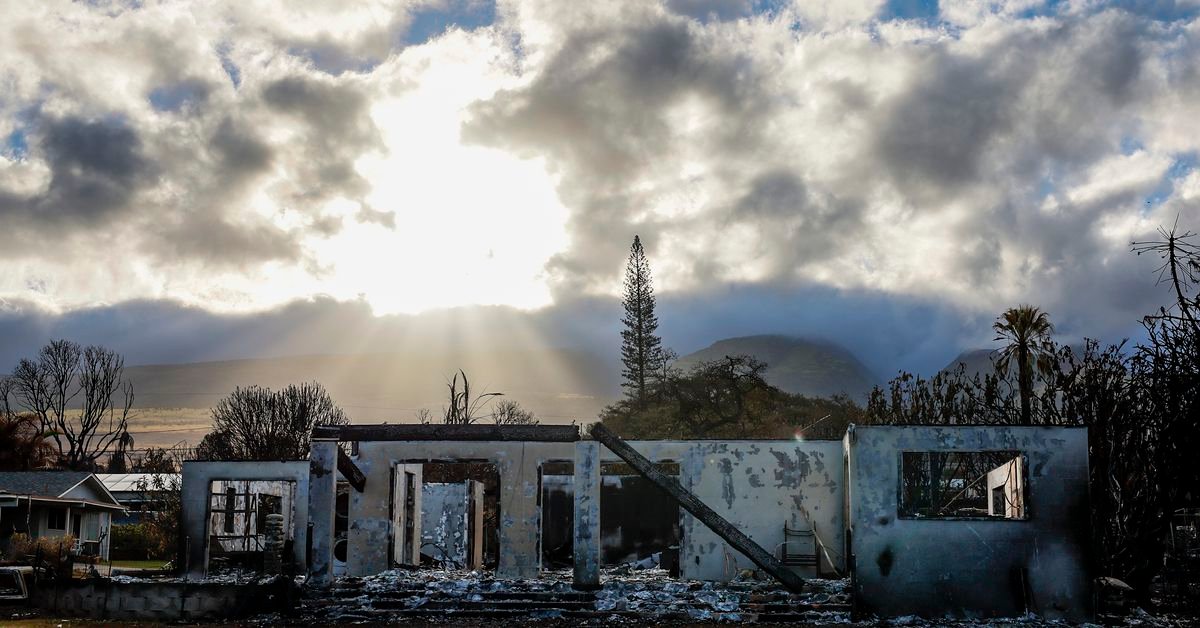[ad_1]
Climate disasters are costing the US billions of dollars a year, and the damage isn’t spread out evenly, according to a new national climate assessment.
The assessment, produced about every four years, lays out the toll climate change is taking across every region in the United States. This is the fifth one — but for the first time, this year’s report includes chapters dedicated to economic impact and social inequities. As floods, fires, heatwaves, and other calamities tied to climate change intensify, households pay the price with higher costs and worsening environmental injustices.
As floods, fires, heatwaves, and other calamities tied to climate change intensify, households pay the price with higher costs and worsening environmental injustices
Climate change has created circumstances that the planet hasn’t seen for thousands of years, the report says. Global temperatures have risen faster over the past half-century than they have in at least 2,000 years. That’s led to all sorts of new threats, like the 2021 heatwave that killed more than 1,400 people in the typically temperate Pacific Northwest. And old problems get much bigger, like droughts sucking the Southwest dry. Drought in the Western US is currently more severe than it’s ever been in at least 1,200 years. Since 1980, drought and heatwaves alone have caused more than $320 billion in damages.
Extreme weather disasters make up some of the most devastating displays of climate change and are becoming way more common — and more costly. Back in the 1980s, a billion-dollar disaster hit the US once every four months on average (a figure that’s adjusted for inflation). Now, the US has to cope with one every three weeks. Those extreme events come with $150 billion in losses every year, according to the assessment. That’s a “conservative estimate that does not account for loss of life, healthcare-related costs, or damages to ecosystem services,” the report says.
There are also more insidious ways climate change takes a bite out of the US economy. Consumers have to shell out more money for food and other goods as prices reflect damages caused by climate change. In the Midwest, pests, diseases, and whiplash between wet and dry conditions linked to climate change threaten corn and apple harvests. And climate change has already supercharged 18 major fishery disasters in Alaska “that were especially damaging for coastal Indigenous Peoples, subsistence fishers, and rural communities,” according to the report.
None of these challenges are happening in a vacuum. Like pollution, climate disasters disproportionately affect Americans of color, low-income households, and other groups that have been historically marginalized. While 20 to 40 percent of small businesses that shutter after a natural disaster never open their doors again, those owned by women, people of color, and veterans are even more likely to close for good.
Flood losses are expected to balloon much faster in communities with a higher proportion of Black residents
Flood losses are expected to balloon much faster in communities with a higher proportion of Black residents. Census tracts where at least 20 percent of the population is Black are projected to see average annual losses from floods rise at a rate twice as fast as other census tracks where less than 1 percent of the population is Black. It’s partly a symptom of racist housing policies like redlining that have left certain communities without the infrastructure and resources to cope with hazards brought on by climate change. Formerly redlined neighborhoods can also be around 12 degrees hotter than surrounding areas because of fewer green spaces and more paved surfaces that trap heat.
All of these risks grow as long as the US, the world’s biggest oil and gas producer, and other countries keep running on fossil fuels. The world has warmed by a little more than 1 degree Celsius since the Industrial Revolution, and the report says 2 degrees of warming would more than double the economic toll from climate change.
The US isn’t taking action fast enough to stop that outcome, the report shows. Planet-heating pollution in the US has only fallen by an average of about 1 percent annually since 2005. It needs to drop by more than 6 percent per year to meet the goals of the Paris climate agreement, which commits countries to keeping global warming below 2 degrees Celsius.
[ad_2]
Source link





